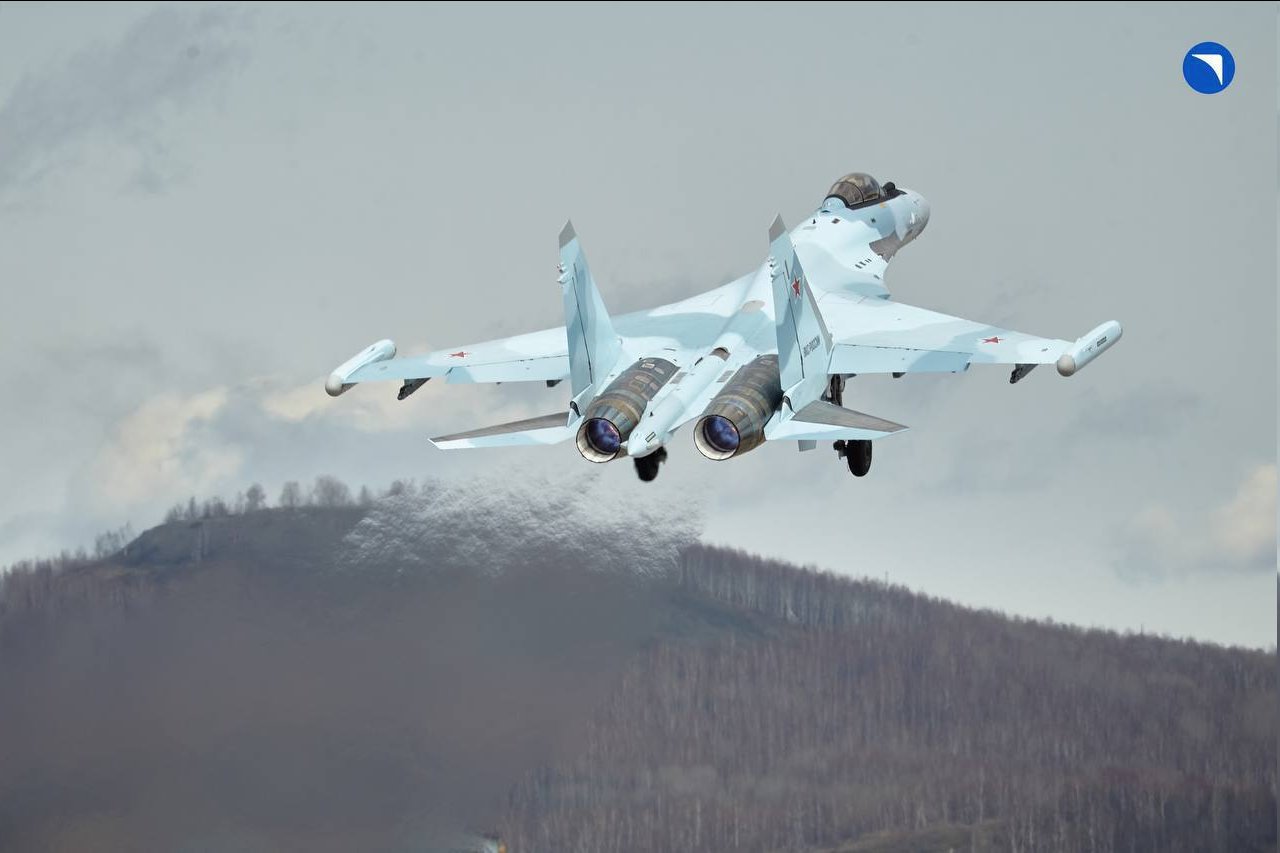Helsing unveils Lura and SG-1 Fathom: AI for digital oceans
Helsing has launched Lura, a new AI-enabled software designed to be combined with an autonomous subsurface glider called SG-1 Fathom. The announcement was made in a briefing to journalists at the company’s London office on 13th May. The two are designed to work together to provide persistent surveillance in the subsurface domain, helping western navies to scale their anti-submarine warfare (ASW) capabilities.
Working with the Royal Navy over the past 18 months, Helsing has built a foundational AI model based upon decades of subsurface acoustic data acquired by the company, Amelia Gould, the General Manager for Helsing’s maritime programmes told the gathered journalists. This essentially means that the AI models at the heart of Lura have been trained on a very broad set of data, enabling them to discern more from what they sense when deployed. “Think of it like a large language model, they have been trained on millions of acoustic signatures so they can identify and classify underwater objects,” Amelia said by way of explanation.
This effort led to a benchmarking exercise, proving the technology’s viability before Lura’s development began. “We are forging a mission partnership with the Royal Navy and industrial partners as well as other navies,” Ned Baker, the MD for Helsing UK added, emphasising the close relationship between Helsing and its end customer that has informed the development of Lura and the SG-1 Fathom.
“An AI model is only really one part of the answer. The war in Ukraine has taught us that you need sensors, and lots of them,” Amelia said. This certainly seems to be the case. While target acquisition and reconnaissance have always been central to warfare, conflicts since 2018 – with Turkish deployments to Syria, and then the Nagorno-Karabakh war – have shown the importance of dominating the ISTAR battle. Those who lose typically face long-range strikes that are difficult to defend against.
This problem is particularly acute in the field of ASW, which typically requires a lot of resources – P-8 Poseidon aircraft, Type 23 frigates, and submarines in the UK’s case – requiring prolonged deployments. A complement of four ships might only allow one to be at sea at any given time. So, the assets available for ASW are in short supply, at a time when they are increasingly needed to protect underwater infrastructure and detect adversary submarines.
Helsing feels that Lura combined with the SG-1 provides that solution. “Navies need a simple and adaptable way to deploy Lura at scale, across the world. This is where SG-1 Fathom comes in, which we believe redefines subsurface surveillance,” Amelia said. Helsing believes a single operator could deploy hundreds of SG-1 Fathom gliders to patrol an area. These gliders would provide search, detection, and classification of objects entering that space. Their very low signature is considered important for deterrence.
The defence dividend

Helsing co-founder and co-CEO, Gundbert Scherf (right) and Amelia Gould, General Manager of Helsing’s Maritime programmes (centre), meet with Vice Admiral Andrew Burns CB OBE, Fleet Commander, Royal Navy, during a presentation of Lura and the SG-1 to the Royal Navy in May 2025. Credit: Helsing
The UK’s Prime Minister recently talked about the “defence dividend” which is essentially the opposite to the peace dividend that countries sought to exploit following the collapse of the Soviet Union in the early 1990s. Defence budgets contracted severely in that time, limiting development and production, the effects of which still impact the defence industry today. Helsing is well-positioned to benefit from this shift, having built its UK capability through close partnerships with the end user.
“We work with the end user to develop the capability and then deploy it after a certain point with the specific intent that we will modify and iterate as it goes,” Ned Baker added. To that end, the company is aiming to deploy the SG-1 Fathom with Lura onboard with the Royal Navy in the next twelve months, and is working to develop new procurement practices and commercial models to enable this.
“However, we can’t do this alone, and this level of ambition requires partners for delivery,” Amelia said, hence the partnership announced between Helsing, Blue Ocean Marine Tech Systems, Ocean Infinity, and Qinetiq in April this year. Blue Ocean Marine Tech provides the glider for the SG-1 Fathom, Ocean Infinity provides elements of the communications system, and Qinetiq supports integration and testing with the AI and software, with Helsing supplying and integrating supporting hardware.
Alongside this, Helsing is establishing a UK industrial base with its partners to manufacture SG-1 Fathom in the UK. Initially planning to build in the hundreds, they will eventually scale production to the thousands. “We understand from Ukraine how important it is to have a resilient, flexible and scalable manufacturing supply chain,” Amelia said, drawing on the company’s experience in developing, manufacturing, and deploying the HX family of strike drones to Ukraine.
Tech profile: Lura and SG-1 Fathom

This image from the Helsing website shows the technical specifications of the SG-1 Fathom. Credit: Helsing
As already mentioned, Lura works on a foundational model, which means that it is a set of algorithms trained on a large dataset to interpret data received by the SG-1 Fathom. That data is collected passively, meaning the SG-1 does not need to emit its own signals to conduct its mission. It also means that if deployed now, Lura would not be at its most capable. The idea is to rapidly iterate, retraining the model on live operational data after each deployment. This is common in software development and AI, where fine-tuning occurs through methods such as training on specific datasets or using various forms of reinforcement learning. There might eventually be a release of an entirely new model, which would come with significant leaps in capability. The former is a continuous process throughout a model’s lifecycle, while the latter occurs when a new model offers significant advancements.
Understanding this is important for understanding the way that the defence ecosystem in the West is currently evolving. For much of the past 80 years, capability improvements have been defined by characteristic increases or decreases. The speed of a jet, the range of a ship, or the number of missiles that it can carry, for instance. This is due to both cost and physical limitations. For instance, there are limits to how fast and far a missile can travel while still fitting in a vertical launch cell. Therefore, software and AI updates are expected to provide capability increases in areas where hardware improvements are too difficult or expensive. Lura can, according to Helsing, detect contacts 10 times quieter than a human and 40 times faster, with a 90% classification accuracy. The Helsing team reported that tests with one navy even showed its ability to differentiate between two ships of the same class. This is critical as typical sonar detection relies on the operator to understand what he or she is hearing and make sense of it. And here, the limitations of human operation become clear:
- A single operator cannot work 24 hours a day for months on end.
- Their judgement may change depending on how they feel at the time.
- They may struggle to learn new skills.
An autonomous platform like the SG-1 Fathom, equipped with AI on the edge, does not have these issues.
The system works by deploying underwater gliders, specifically the SG-1 Fathom, in groups to patrol a given area. The SG-1 can move through the water column by altering its buoyancy, providing detection at different depths. Their minimal moving parts and lack of inter-communication further reduce their underwater signature and probability of detection. This is an important element for deterrence, although other companies have taken a different approach. The Anduril Seabed Sentry, for example, is designed to provide a network of seabed sensors; however, they are designed to communicate with each other, potentially increasing their underwater signature. The SG-1 is equipped with four passive sonars designed to detect sounds and sonar, which are then processed by the Lura algorithms running on an integrated Nvidia computer. Upon target detection, the SG-1 returns to the surface and transmits the Lura-analysed data in small packets to a headquarters, supporting ship, or other asset.
The gliders are launched from the deck of a ship and have a 3-month endurance, requiring battery cleaning and recharging afterwards. Helsing envisions the continuous deployment of these sensors to protect or constantly monitor an area. This would enable earlier threat detection, providing commanders and policymakers with more time to shape their decisions. Building operator trust will be crucial for this system, drawing on her experience as a former Royal Navy officer.
Calibre comment

This image shows four SG-1 Fathoms on the back deck of a ship. They are based on gliders used in the oil and gas industry, with well proven technology that can be easily launched and recovered. Credit: Helsing
As we have covered elsewhere on Calibre Defence, the areas that modern navies must patrol are vast. Even relatively small adjacent seas like the Norwegian and Greenland Seas cover 2.5 million square kilometres. This is compounded by declining numbers of surface vessels and aircraft for ASW, and adversaries like Russia and China maintaining or increasing their subsurface fleets. NATO is looking to a concept known as “digital oceans” which draws on the belief that with enough autonomous sensors, NATO forces can offset their lack of numbers to still detect and find adversary submarines within an actionable timeframe.
The rationale for this should be relatively clear. Consider the recent statements by Air Vice Marshal Blyth Crawford at the RUSI air defence conference. He revealed that the UK would likely struggle to effectively resist a bombardment similar to that faced by Ukraine in the initial stages of the invasion. Russia’s Northern Fleet possesses significantly more submarines than its Black Sea Fleet, many capable of launching land-attack cruise missiles and, more concerningly, nuclear ballistic missiles. Therefore, the ability to detect, track, and classify these vessels is vital for NATO’s security and for deterring Russian action by demonstrating that its subsurface assets will be detected and engaged.
By Sam Cranny-Evans, published on 13th May, 2025.

Sign Up for Updates!
Get insider news, tips, and updates. No spam, just the good stuff!






